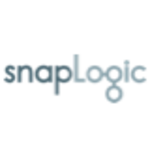What is our primary use case?
We use this solution for data integration, especially in our big data projects.
For the past year, we have also been using Talend Open Studio for process automation. Some of the operations done by human beings are now automated. We also deliver this solution to our customers.
Currently, all of the solutions that we deliver to our customers are on-premises.
How has it helped my organization?
This product is going to replace any engagement with human beings. For example, we have integrated with several systems but we do not do the integration manually. Another example is that we track lots of servers and our scheduled workflow checks functionality and performance related to our systems. Talend sends us notifications via email, and can also update our database. This means that we don't need to have somebody sitting in front of a PC, monitoring processes and behavior.
We also use this solution for metadata management and for data quality management.
What is most valuable?
The interface is very user-friendly.
The solution's API and integration are very important to us.
We most often use the ETL features, and then export to, for example, chart files. We also use functions related to connectors, for example, integrating with relational database management in SQL.
A helpful feature for us is the integration with NoSQL databases. We use less integration with other kinds of technologies such as file management, control, orchestration, and mapping. All of the features are here and all of them are important to us.
What needs improvement?
The price for Talend Data Integration should be less expensive.
Buyer's Guide
Talend Open Studio
April 2025
Learn what your peers think about Talend Open Studio. Get advice and tips from experienced pros sharing their opinions. Updated: April 2025.
850,671 professionals have used our research since 2012.
For how long have I used the solution?
I have been using this solution for more than four years.
What do I think about the stability of the solution?
In the past year that I have been working with Talend, I haven't found any problems in terms of stability. Some of my colleagues have had problems, but they have been fixed.
What do I think about the scalability of the solution?
We have never had issues in terms of scalability. In fact, we have not had requirements from any customer that the solution is horizontally scalable.
How are customer service and support?
We have never used any kind of support from Talend, as a vendor. All of the problems that we have encountered, we have fixed ourselves. We did, of course, make use of their knowledge base.
Which solution did I use previously and why did I switch?
We use different solutions depending on the needs of the customer, including budgetary considerations. We try to use Talend as much as possible but there are some cases where it does not fit. For example, we cannot provide a solution with Talend when we use Kafka.
Another example is that sometimes when a customer is using Oracle, rather than Talend we use Oracle Data Integrator. Again, it depends on the customer requirements.
How was the initial setup?
The initial setup ranges from simple to complex.
For the average customer, we are able to deliver solutions between two and six months. Sometimes, this is only part of the solution that we integrate for our clients. Something other than data integration may be covered by another product. One of the products that integrate well with Talend is Vertica. Together, it makes for a small setup.
Normally, one or two people are required for the deployment of this solution. It is a small team, and it covers more than just Talend.
Maintaining this solution should be the job or four or five people because you're sharing these resources. These people sometimes represent different levels of support and have varying levels of experience.
What about the implementation team?
We perform the implementation of this solution for our customers.
What other advice do I have?
We are totally satisfied with this product. We have not found any problems. It is an open-source, platform-independent, and pretty stable.
My only complaint is that the commercial version is very expensive. There are some limits, but the commercial version is unlimited.
I would rate this solution a ten out of ten.
Disclosure: My company has a business relationship with this vendor other than being a customer: Partner.














